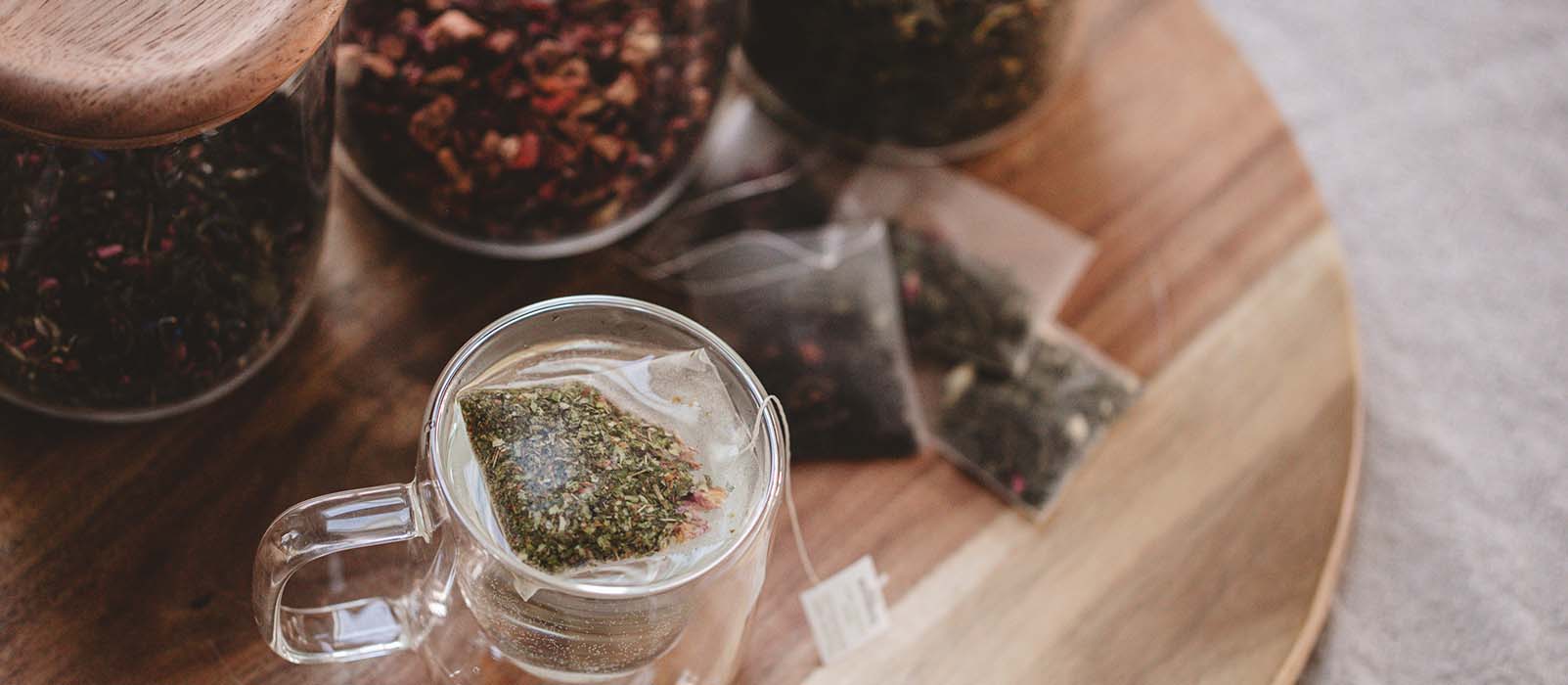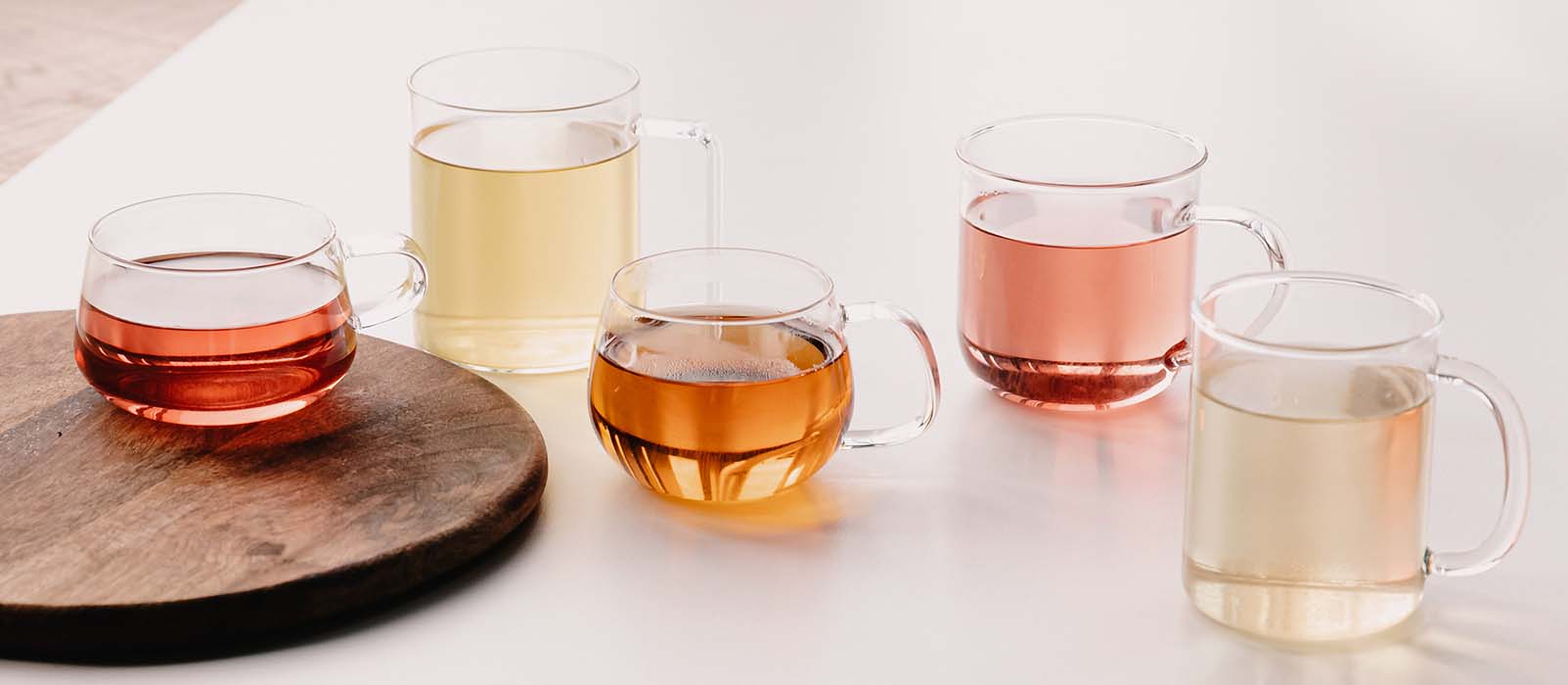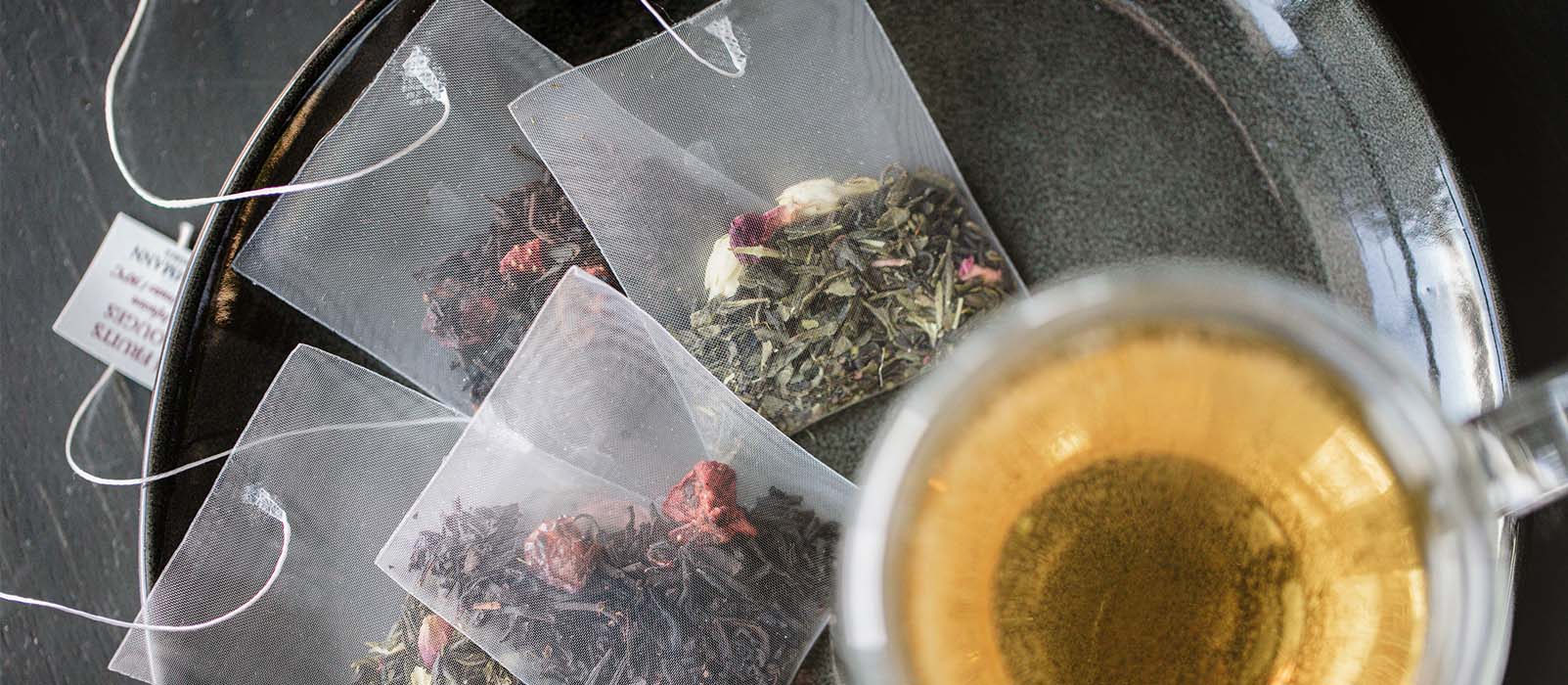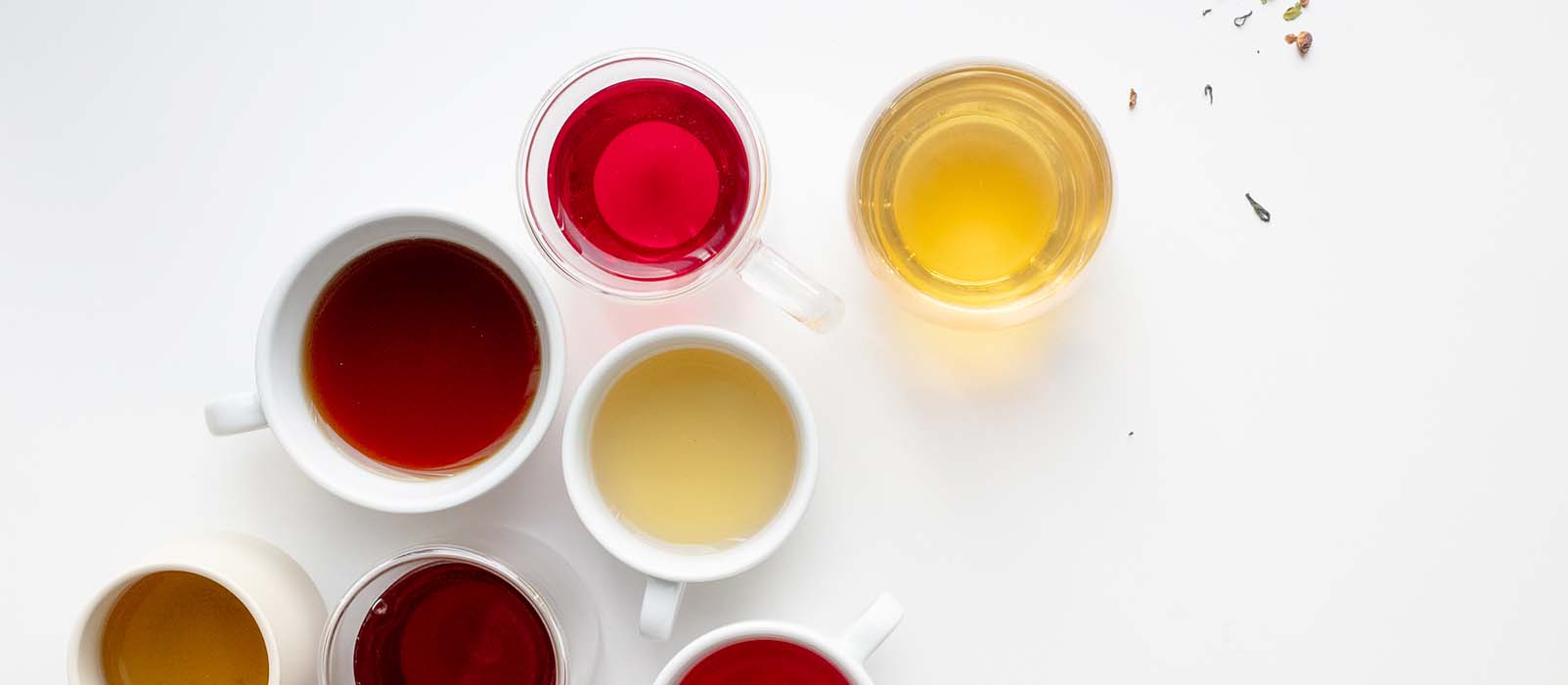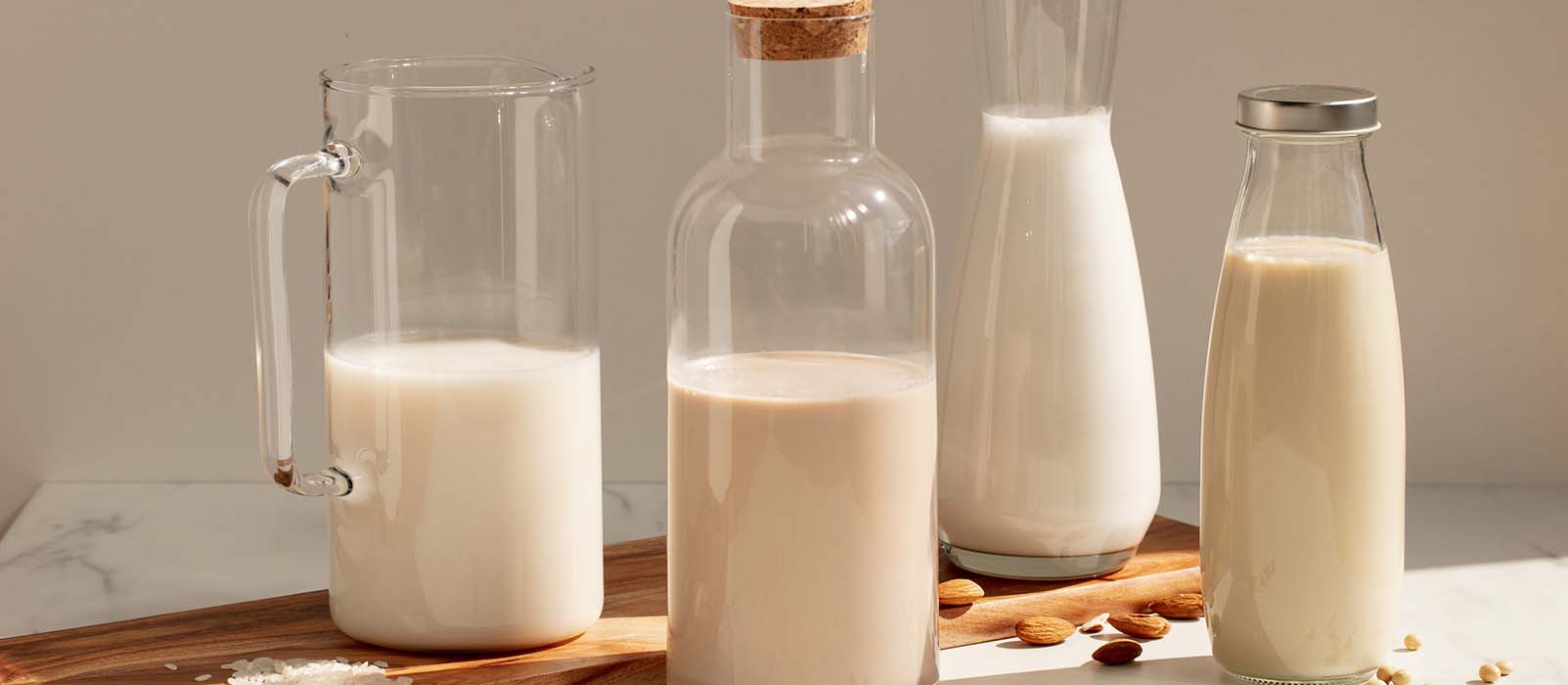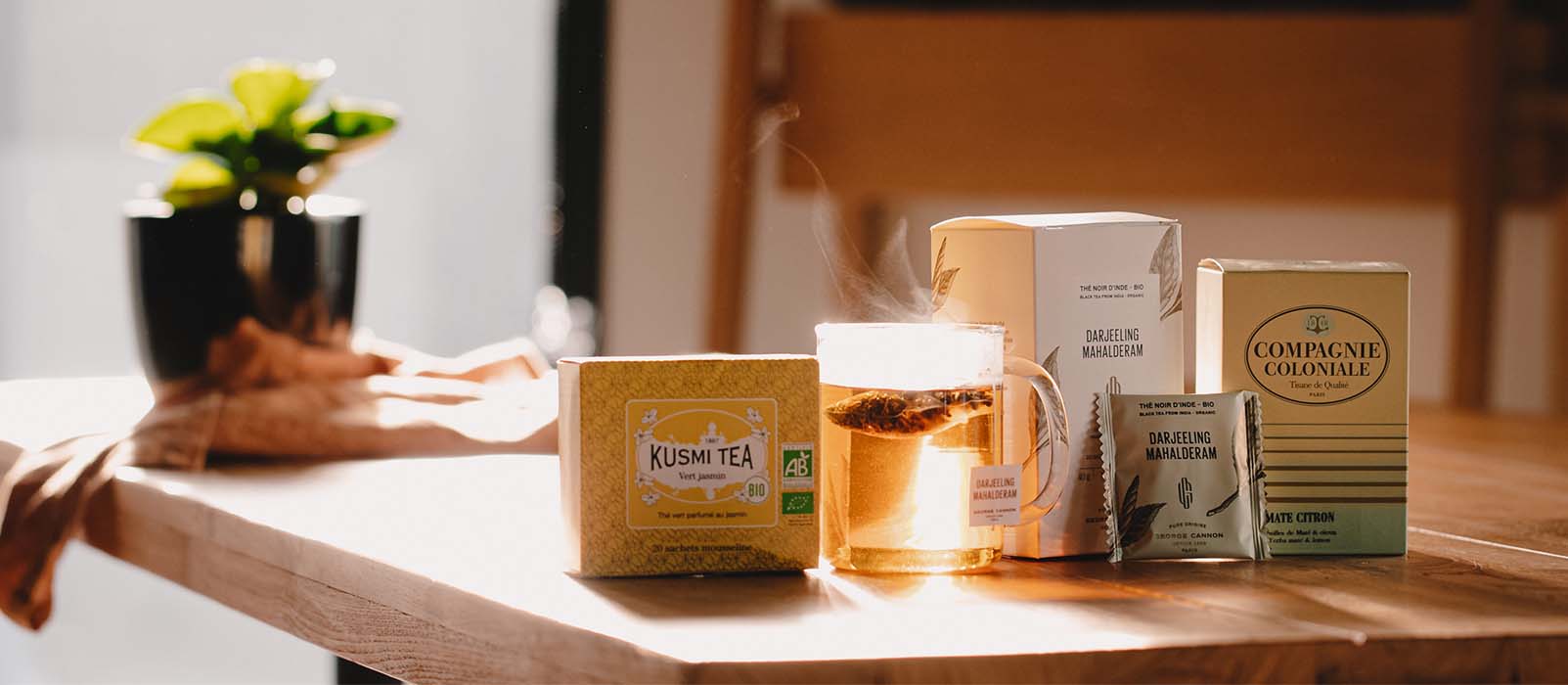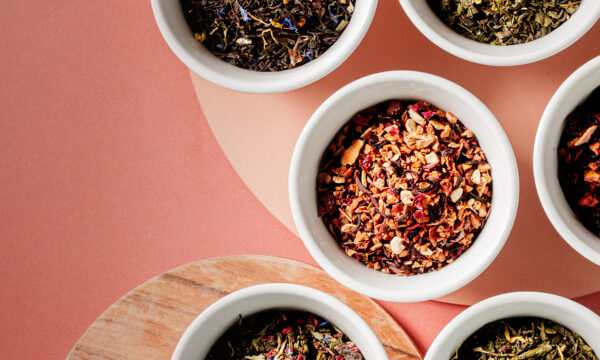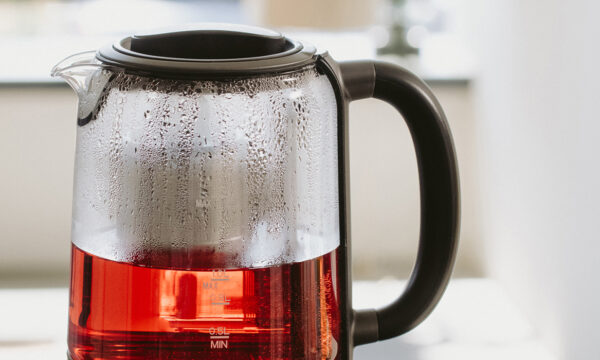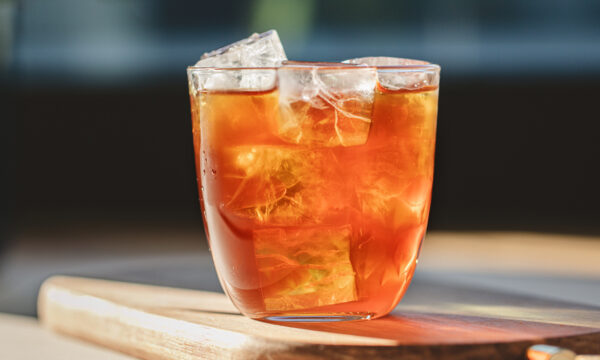
- Home
- The ultimate guide to choosing your tea
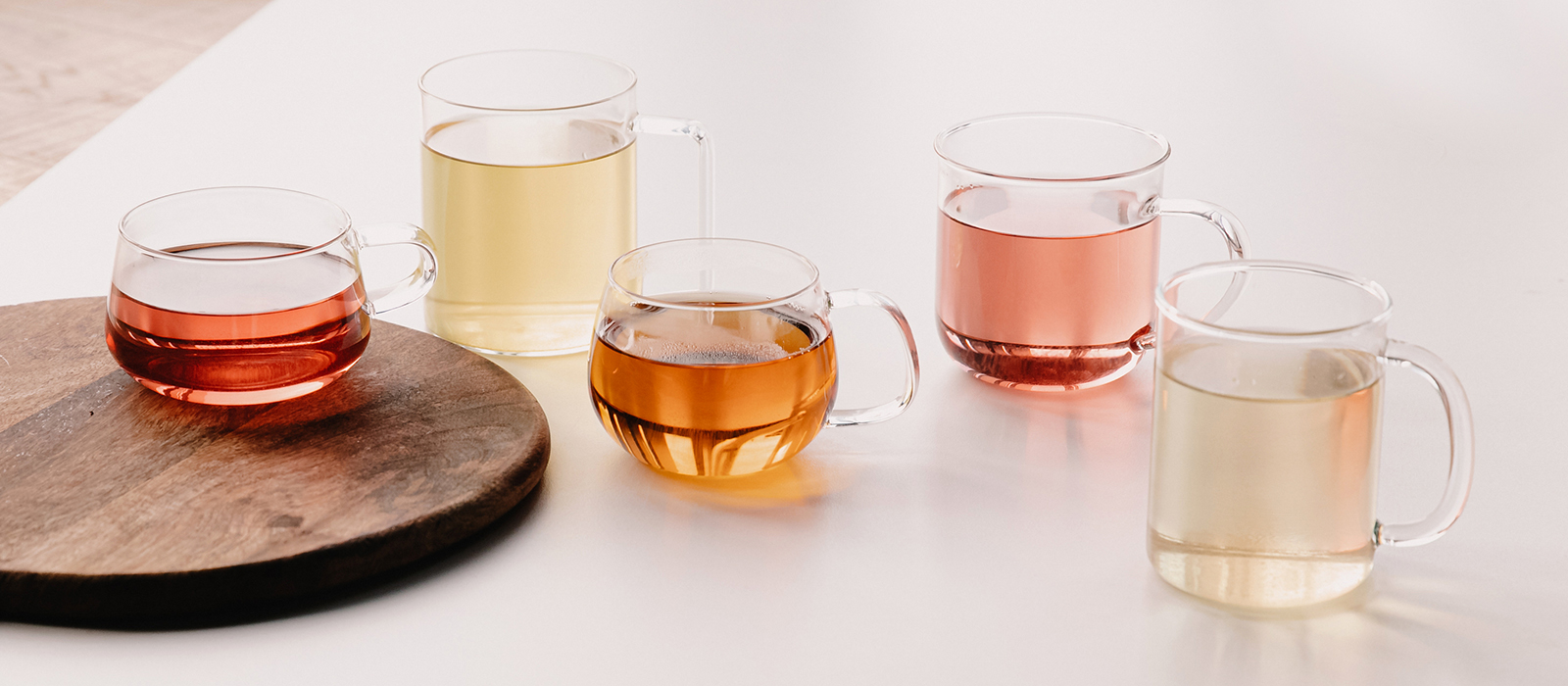
The ultimate guide to choosing your tea
Written by Alice
Reading time 12 minIt’s not always easy to choose among the many different brands, flavours and types of tea on offer. That’s why in this handy tea guide, we’ll provide all the information and instructions you need to select the perfect tea for your tastes. Let’s dive into the world of tea!
What is tea?
Before knowing how to choose tea, let’s start with the basics-what exactly is tea?
Tea is a drink, usually consumed hot though you can also make iced tea, made from the leaves of the Camellia sinensis plant. While herbal infusions like chamomile or peppermint are often called ‘tea,’ true teas come exclusively from this plant. The processing methods used on the tea leaves after harvesting determine the type of tea produced — whether it’s white, green, oolong, black, or pu-erh. The oxidation process, fermentation, and drying methods all contribute to the tea’s final flavour, aroma, and appearance.
Today, it is one of the most consumed drinks in the world, loved for its unique characteristics, cultural significance, and ability to suit various tastes and preferences.
History of tea
The Dutch imported this beverage from Japan to Europe in the 17th century. Today, it is one of the most popular drinks in the world, particularly in the form of black tea. Japan, meanwhile, is by far the biggest consumer of green tea – no surprise given the cultural importance of tea ceremony. Each type does not come from a different tree, as was long thought in the West, but from the tea plant. It is instead the treatment of the harvested leaves that makes the difference.
How is Tea Made?
The journey of tea from leaf to cup involves several key steps in the processing methods:
- Plucking: Tea leaves are carefully hand-picked by skilled farmers.
- Withering: Leaves are laid out to reduce moisture content.
- Oxidation Process: This step defines the tea’s type, from white to black tea, based on exposure to oxygen.
- Rolling: Leaves are rolled to shape them and release essential oils.
- Firing: Heat is applied to stop oxidation and preserve flavour.
The final result depends on the chosen method and the desired type of tea.
Where is Tea Grown?
India: The world’s largest tea producer. Its tea farmer collectives are responsible for about a third of global production. Darjeeling, Assam, and Nilgiri are its most famous regions.
China: Regarded as the birthplace of tea, China produces a wide range of tea varieties, including Dragon Well (Longjing) and Silver Needle white tea.
Kenya: The leading exporter of tea globally, people like it for its strong black tea with a full body.
Sri Lanka (Ceylon): Produces Ceylon tea, this Sri Lankan Tea often with floral and citrus notes.
Japan: Famous for its high-quality green teas like Sencha and Matcha, steeped in japanese tea cultural tradition.
Other Producers: Vietnam, Indonesia, Malaysia, and Taiwan all produce notable teas with distinct flavours and unique characteristics.
What Are the 5 Types of Tea?
The actually number of types of tea is somewhat debatable. At the very least, there are 3 most popular varieties of teas
White tea
The least processed tea after harvesting, white tea is dried, very lightly oxidised, and consumed plain. It is the most delicate and the freshest. The instructions for white teas is to use 60°C water and brew the tea for 5 to 6 minutes.
Green tea
Green tea is a tea with many therapeutic properties, it’s mainly obtained from young tea leaves. It releases vegetal notes with a slight astringency and is not oxidised. The instructions for green teas is to use 75-80°C water and brew the tea for 3 minutes.
Black tea
Consumed plain or sweetened, black tea is oxidised. It can be prepared with milk and is often used for flavoured teas. Black tea generally delivers a very round infusion. Smoked tea, also known as ‘China tea’, is a sub-category of black tea. Some popular varieties include English Breakfast, Darjeeling and Earl Grey. The instructions for green teas is to use 85-90°C water and brew the tea for 4 minutes.
Other Category of Teas
Aside from the three main families, other types of tea are also available:
- Yellow tea: very lightly oxidised, yellow tea is selected from the youngest leaves of the tea plant. This brings fruity and floral notes to the beverage;
- Oolong tea: semi-oxidised, oolong tea has low caffeine content. It can be consumed plain or slightly sweetened. On the palate, it has a lovely roundness and notes of chestnut;
- Pu-erh tea: post-fermented, pu-erh tea can also be found compressed in the form of cakes or bricks. It’s a dark drink that improves with age, becoming more mellow and less bitter. Its notes are also very distinctive.
Last but not least, we have rooibos, or red bush. This caffeine-free herbal variety from South Africa does not come from the tea plant, but its preparation method makes it similar to the other types of tea. It can be consumed hot or cold, and can be either fermented or unfermented. When not fermented, it is called ‘green rooibos’.
All of these teas can be consumed loose-leaf, by brewing them using a filter, or with tea bags. Be sure to read the instructions on the packaging to know the best way to brew your favorite teas.
Unflavoured vs flavoured tea
Unflavoured tea is 100% leaf and nothing else. In general, the tasting notes of these teas are very distinctive. This is because their aromatic power, body and significant tannins are linked to several factors. These include terroir, altitude, soil, climate, country, and oxidation method.
Flavoured tea, on the other hand, is made from leaves to which natural or synthetic flavouring agents are added. This includes pieces of fruit, flower petals, essential oils, leaves, spices, etc. It’s the process used that distinguishes both types, but they are based on the same principle. Flavoured teas can also be grouped into main families:
- Gourmet teas: with notes of vanilla, caramel, chocolate, etc. The term ‘gourmet’ is used when the notes are sweet;
- Fruity teas: with aromas of red fruit, exotic fruit, orchard fruits, etc. This is where pieces of fruit and/or natural or artificial flavourings are added to the mix;
- Flowering teas: with flavours of jasmine, rose, lavender, etc. This denotes teas whose fresh leaves are blended with blooming flowers;
- Spicy teas: with flavours of cinnamon, ginger, cardamom, etc. Here the beverage releases notes of spices.
Terroirs and Their Different Varieties Of Tea
Where the leaves come from can make a real difference. For example, black teas from Assam or Kenya grown at low altitudes are the most full-bodied. They typically have powerful aromas that will envelop your palate, while retaining a certain roundness. Conversely, Darjeeling black tea, grown in the foothills of the Himalayas, is more subtle and delicate. Green teas from China and Japan are finer on the palate, but still a little bitter. What’s more, there are blends of unflavoured teas that’ll either balance the flavours or offer a smoother, cleaner taste. English Breakfast tea, originally a blend of Assam (strength), Ceylon (roundness) and Darjeeling (delicacy), is perfect for those who love strong teas thanks to its well-developed tannins. It goes perfectly with a dash of milk. The same is true of English Blend or African Breakfast.
What are the 4 main grades of tea?
Whole Leaf (Loose Leaf) Tea: This is the highest grade of tea, consisting of whole, unbroken leaves. Whole leaf tea provides a richer flavour and a fuller body as the leaves retain their essential oils and aromatic properties.
Broken Leaf Tea: These are leaves that have been intentionally broken into smaller pieces. They offer quicker infusions and stronger flavours. Many quality tea bags use broken leaf tea to speed up brewing while maintaining a good taste.
Fannings: These are small tea leaf particles that are produced as a byproduct of tea production. While not as high quality as whole or broken leaves, fannings are commonly used in tea bags. They produce a fast, strong brew but lack the complexity of whole leaf tea.
Dust: This is the finest grade of tea particles, typically found in lower-end tea bags. While it brews quickly and creates a strong cup, it lacks the subtlety and flavour nuances of higher grades. Dust is often used in mass-market, commercial tea bags.
What is the number 1 tea in the uk?
The leading spot is actually shared between Yorkshire tea and PG Tips. However, when it comes to brand of tea, Tetley is actually in the lead.
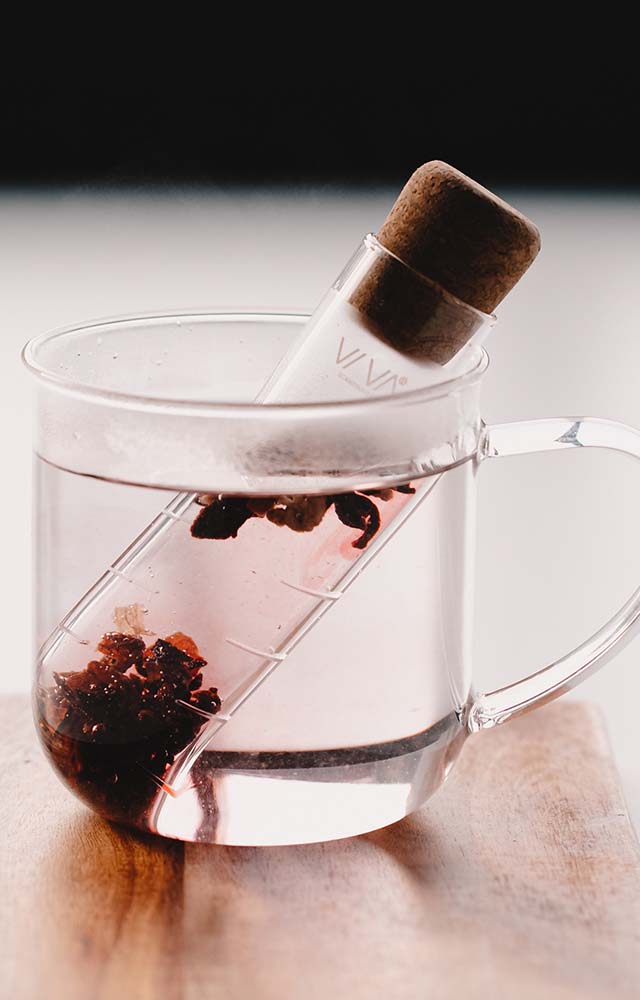
The art of drinking tea
When to enjoy it
Tea can be enjoyed at any time of day, but certain times of day are better suited to certain types. For breakfast Assam is perfect for waking up refreshed! Its natural strength and full body help you get up in the morning. Other strong blends are also recommended, such as English Breakfast. This tea combines the strength of Assam with the roundness of Ceylon and the softness of Darjeeling. Gourmet teas meanwhile are the ideal substitute for that morning hot chocolate.
At lunch Smoked teas are great for brunch. Pu-erh teas can complement sweet and even savoury dishes. For a more traditional lunch, green teas with vegetal notes and a slight astringency go perfectly with your dishes. After a heavy meal, why not try mint tea? It’s rich in antioxidants and will help with digestion (provided you drink it without sugar).
In the afternoon White teas with subtle, refreshing notes can work perfectly. Floral or fruity teas are also a good alternative if you’re feeling a little tired. For an afternoon snack, gourmet teas are delicious with tasty treats. Ceylon and Oolong can also be enjoyed with chocolate or butter biscuits, thanks to their natural sweetness and roundness.
In the evening Rooibos are favorite teas to wind down if you want to avoid insomnia and sleeping difficulties. It won’t have any effect on your sleep quality and will even help you to relax.
Brewing Tea : How to best make your tea
Tea drinking and brewing can be an art if you want to turn it into one. Here are some things that we recommend you do to make an amazing cuppa:
- use high-quality hot water
- read the instructions indicated on the packet and respect the minute indications
- use the right water temperature for your type of tea
- use the right container
For purists, drinking tea involves a certain ritual, beyond simple daily consumption. Be sure to look into the different types of tea bags you could choose as well.
Do tea and milk go well together?
It’s certainly a yes for the taste, but perhaps a no in terms of positive vascular effects. A study was carried out on sixteen women over the age of fifty. The test consisted of drinking 500 ml of black tea, with (up to 10%) or without milk. The vascular effects of these two drinks were measured by ultrasound. The study showed that drinking tea significantly increased the dilation capacity of arteries and vessels. This made them more adaptable to variations in blood flow. With milk, however, no dilation of the arteries was observed. So, it seems that adding milk cancels out the cardiovascular benefits of tea. A simple solution? Replace cow’s milk with soya milk.
How to buy your tea
You should be prepared to pay a little bit extra if you like your rarer varieties. Darjeeling First Flush for example will cost more because it is finer and of higher quality. Teas grown at high altitudes are also more delicate and rarer (such as teas from Taiwan), and therefore more expensive. If you want to be sure of buying a quality drink, we recommend you go for whole leaves (except for broken leaves). Although less expensive, avoid choosing teas crushed in tea bags: they’re often of poorer quality. For those on a budget, China tea is a good compromise. Flavoured teas are also cheaper, as the base is often a blend. Note that the leaves are never rinsed (from growth to tasting), as this would alter the flavours. As a result, if the field was treated with pesticides they will likely end up in your tea. There are several ways to get around this:
- go organic
- opt for small farms
- look for batch information
Indeed, some tea shops offer information on each batch.
Our tea tips and selections
In addition to its delicious, fresh or comforting notes, tea is a beverage with many health benefits. That’s why, at MaxiCoffee, we often prepare selections by season. What better way to find the right tea for your needs? With autumn and winter approaching, gourmet tea is the perfect drink for your afternoon snacks. Here’s an assortment with notes of chestnut and pecan, to reinvigorate your taste buds and get you ready for the season.
Comptoir Français Du Thé Salted Caramel Oolong – 100 g Loose Leaf Tea
A real comfort no matter the time of day. The brand is in close contact with producers and ensures total transparency of its products, from garden to cup.
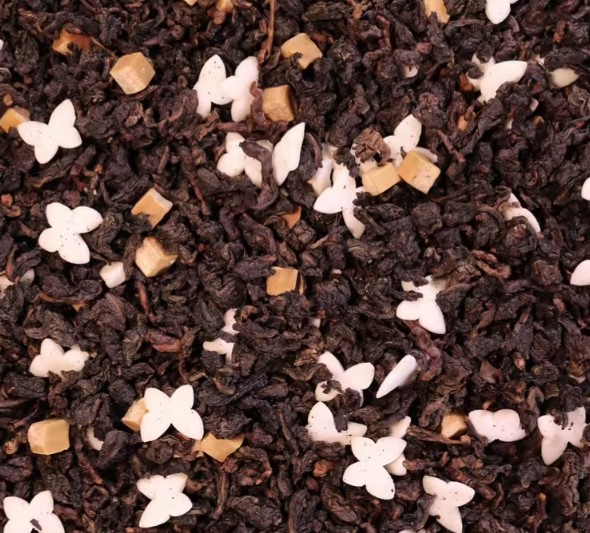
Loose leaf tea – Oolong Caramel Beurre Salé – COMPTOIR FRANÇAIS DU THÉ
– Notes: caramel pieces, sugar butterflies
– Origin: China
– Packaging: 100g loose leaf tea in sachet
Damman Frères Rooibos Carrot Cake – 100 g
A well-rounded drink characterized by its warm, inviting flavors, featuring a harmonious blend of spicy, woody notes that evoke a sense of comfort and richness.
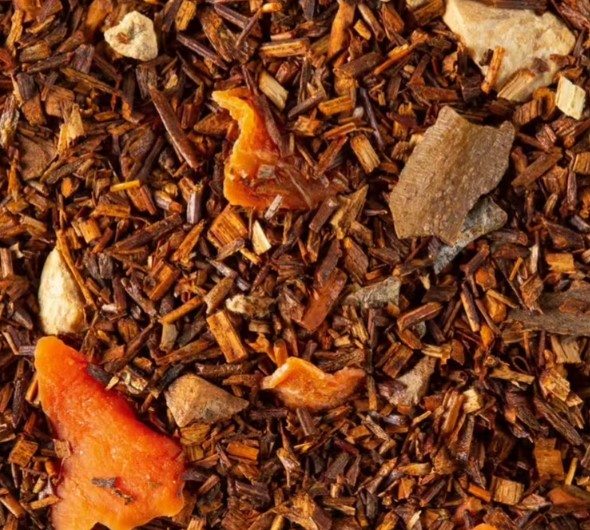
Loose leaf tea – Rooibos Carrot Cake – DAMMANN FRÈRES
– Notes: cinnamon, almond, pecan nut
– Type of tea: gourmet rooibos
– Packaging: 100g loose leaf
You now have all the instructions and knowledge you need to make a wonderful cup of tea. if you’re ready to get going, be sure to visit our website. Here you’ll find all our tea selections. Whether loose leaf, tins, sachets or selection boxes, there’s something for everyone!
Discover all of our articles
